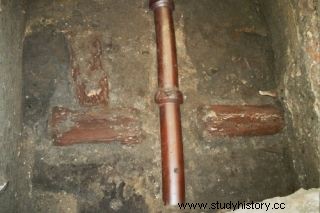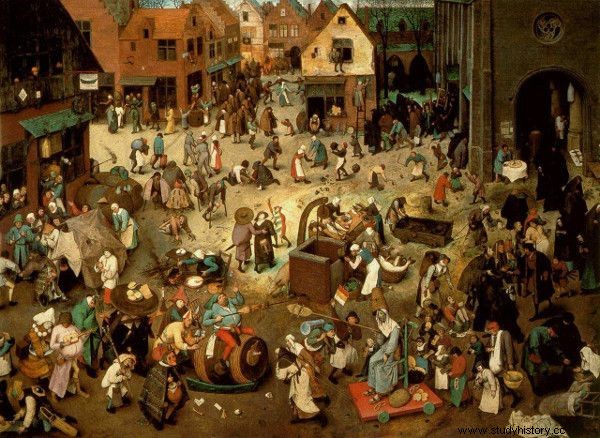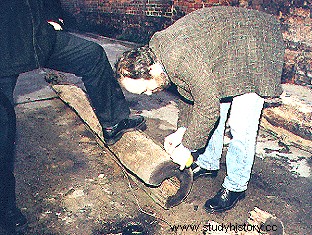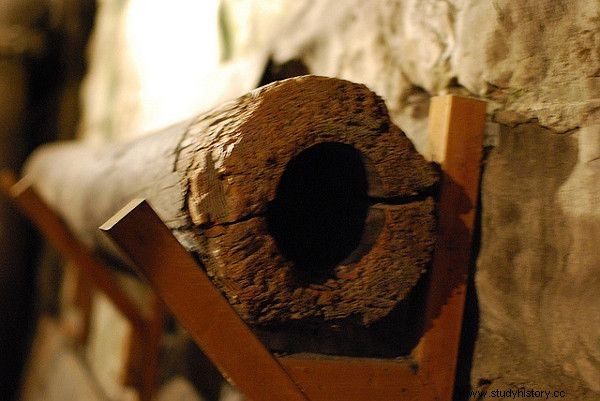Over a billion people on Earth do not have access to clean drinking water. Meanwhile, waterworks in Krakow appeared in the Middle Ages. In the 17th century, richer city dwellers already enjoyed the water intake in their own home. However, it was much worse with the sewage system. Where did all the waste land?
Running water in the house, sewage system or the possibility of using the bathroom. It would seem that these are the achievements of civilization of the last centuries, and people living in earlier epochs had to somehow manage without them. Nothing could be more wrong!
As Stanisław Tomkowicz, author of the book "Houses and flats in Krakow in the first half of the 17th century" writes, the first references to the municipal water supply system in Krakow come from the fourteenth century.

A well in the courtyard of Collegium Maius of the Jagiellonian University (photo:Jan Mehlich, CC BY-SA 3.0)
The medieval capital of Poland had a water supply network, supplying potable water to three city wells standing on the Krakow market square (the western well near the "Krzysztofory" palace, the St. / P> 
The contemporary sewage system in Kraków cuts through a wooden water pipe from the 15th century. Material of the Archaeological Museum in Krakow.
Priceless Spa H 2 It started in the Rudawa river, from where it flowed through wooden pipes towards the very center of the city. By the way, it is good that the people of Kraków of that time did not attempt a technologically advanced and tried in ancient Rome solution, which was the production of lead pipes ...
Pipe from a neighbor and no water meters
With time, we note a lot of progress in the field of municipal water supply. In the first half of the 17th century, everything begins to resemble modern times:we are applying for a permit at the office , and when we obtain them, we start possible development of the building plot or connecting the water and sewage system.

Medieval cities were not clean and tidy places…
In the city books from 1623 there is an entry saying that a certain Mateusz Siliński
water from sewers or underground pipes from the ground [...] through their basement under the brick shop going […] to his tenement house at Chrystophory from long ago […] at his expense he gave to bring .

For comparison:the 16th-century waterworks from Toruń (photo:"Gazeta Miejska" of the Toruń City Hall, No. 10 (53) of May 18, 2000).
In other words, Mr. Krzysztof has a water intake at his own disposal. Anyway, not only him.
In 1607, doctor of law Adam Czernkowic was looking for a way to gain access to water and came up with a clever reshuffle so that he could get a water pipe from his neighbor, a lady named Dorota Zagrebska ...
Here it will move, it will transform there, it will be cared for together and everyone will be happy. In any case, from the records in the city register regarding this particular case, we learn that the waterworks were run underground, and the water intakes were located in the rear parts of the houses, where special tanks were usually built to store life-giving liquid .

The first sewage pipes in Seattle were also wooden ... (photo:Karen Neoh, CC BY-SA 2.0)
In addition, a person who had a water supply in the house could allow the neighbors to connect to it and possibly extend existing pipes to supply water to other houses.
Stinky business!
Okay, the house has a water supply and therefore running water. Households enjoy it, and when they're finished, the remains must be disposed of. Before Kraków was canalised, it was dealt with in various ways. Perhaps the most popular method of getting rid of waste and excrement (because not everyone wanted to go to the public toilet) was to drain them outside through gutters.
There were times when any filth thrown out of the house landed right on the street or was deposited in pits and ditches right next to the property. Now, just imagine the stench of decaying garbage, excrement, dead rats ... If we add to this the disgusting stench from illegally operated slaughterhouses, the stench of breweries and other city fumes, we will realize how medieval and modern Krakow smelled.

All the content of the channels on the streets? This is medieval everyday life… (photo:Hugo Clément, CC BY-ND 2.0)
And now we say “Ahoy!” Like a leading activist of the Krecik underground, and we are moving below ground level. In September 2010, which is actually quite recently, the basement of the Krakow Market Square, which is a modern tourist route, was opened in a grand manner.
For us, it is more important than fanfare and the media that you can see the preserved remains of the old municipal waterworks there. It only remains to organize an "interesting" intelligence mission and confront the information provided by Stanisław Tomkowicz with the relics of the past ...
Source:
- Stanisław Tomkowicz, Houses and flats in Krakow in the first half of the 17th century , Lviv 1922.
We recommend:
"There's nothing like water!" is another article that we publish as part of our cooperation with the Historical Museum of the City of Krakow. Those interested in underground Krakow are invited to… the underground branch of this museum!
